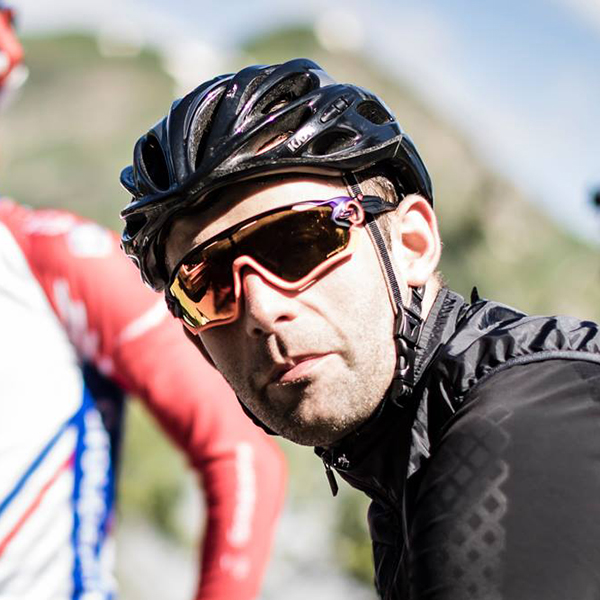Pinarello's updated range of F-Series road bikes improves aerodynamic efficiency, frame stiffness, and ride quality of the brand's entry-level road bike, bringing features seen on the Flagship Dogma F to models starting at £4,000 / €4,500 / $5,200.
Alongside the updated frames, Pinarello has also broadened tyre clearance to 32mm.
Carbon layups vary across the F-Series, with T900 used on the top-tier F9 and F7, T700 on the mid-level F5 and F3, and T600 reserved for the entry-level F1. The F1 remains the entry-level model (£3,000 / $3,250 / €3,400) but retains the previous frameset design.
Updates centred on performance

Central to the new F-Series frame is a new head tube and steerer assembly derived from the Dogma F.
The redesigned head tube is narrower than before, which Pinarello says improves the F-Series’ aerodynamics. This houses an elliptical steerer tube that's similar to Dogma F's.
This has enabled the brand to adopt the flagship bike’s E-TiCR (Total Internal Cable Routing) system, which it claims offers improved serviceability.

Also notable are modifications to the down tube profile (using aerofoil-inspired profile with a blunt training edge) and slimmer fork legs, which are said to improve aerodynamics, and a beefed-up bottom bracket.
This adopts the Aero Keel layout, which debuted on the Dogma F. Pinarello claims this smoothes airflow around the area disturbed by moving feet and legs, while offering a stiff platform for high-powered efforts.

It’s worth noting that Pinarello hasn’t offered any comparative aerodynamic testing data against the Dogma F, or rival bikes, though.
The rear triangle has also been revised with a marginally bulkier design to reduce torsional (twisting) motion, thereby improving power transfer, according to Pinarello. Tyre clearance has also increased to 32mm (from 30mm).


The geometry of the new F-Series remains race-oriented and closely mirrors that of the Dogma F.
Pinarello offers the F-Series in nine frame sizes (two fewer than the Dogma F, but generally up to four more than brands typically offer), ranging from 425 to 595mm seat tube lengths.
Model breakdown and availability

The F-Series is available in five model ‘tiers’.
The F9 comes with a Shimano Dura-Ace Di2 R9200 groupset and MOST Ultrafast 45 DB wheels, while the F7 is available with either Shimano Ultegra Di2 R8100 or SRAM Force AXS drivetrains.
Both feature one-piece Most Talon Ultra Fast cockpits, which were first introduced on the Dogma F.
Pinarello says the F9 weighs 7.4kg, in an unspecified size, while the F7 comes in at around 7.8kg.
These the top-level framesets use Toray T900 carbon fibre, and are said to weigh around 100g more than the Dogma F, but specific frame weights for either aren’t given.

F5 and F3 framesets feature Toray T700 carbon, described as a mid-level layup, offering a blend of light weight, stiffness and compliance.
Both are fitted with Shimano 105 Di2 R7100 groupsets. The F5 is paired with the MOST Ultrafast wheels seen on the higher spec bikes, whereas the F3 is fitted with alloy DT Swiss A1800 wheels.
Here, the bikes are specced with a new two-piece alloy bar-stem setup with internal routing, which Pinarello says enables the rider to change the stem without cutting the hoses.
These models are said to weigh 8.25kg and 8.5kg, respectively.
The F1 features the previous generation frameset design, and is made from Toray T600 carbon, which is claimed to deliver more compliance.
This is equipped with mechanical Shimano 105 and Shimano RS-171 wheels.
It’s worth noting that the F3-spec framesets and higher can only sport electronic groupsets, while the F1’s can be used with both mechanical and electronic setups.

For all bikes, a setback seatpost is specced as standard, but an inline version is available. Pinarello says it’s up to its dealers to arrange specification swaps, but confirms that these are not free-of-charge. Different size cockpits can also be sourced via dealers.
Pinarello claims that the frameset and model specifications were specifically chosen to appeal to varying levels of riders – the F9 and F7 for racers and those engaged in “competition”, while the F5 and F3 are pitched to those looking for a balance of racy performance and comfort. The F1, meanwhile, is aimed towards those looking for value entry point to Pinarello ownership.
Prices are as follows (note that the F9 is not available in the UK at launch):
- F9 - £N/A / $11,000 / €11,000
- F7 (Ultegra Di2) - £6,500 / $8,200 / €7,900
- F7 (Force AXS) - £6,500 / $7,500 / €7,900
- F5 - £5,000 / $6,200 / €5,500
- F3 - £4,000 / $5,200 / €4,500
- F1 - £3,000 / $3,250 / €3,400

